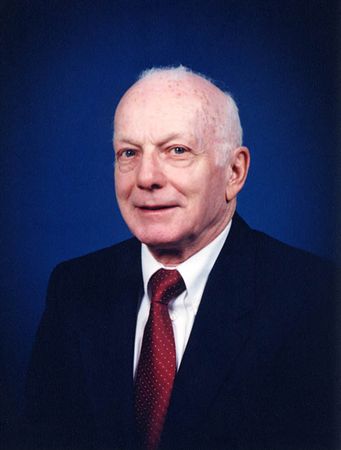|

Dr. Elliot Silverstein was OSSC President for 1979-1980. He served as arrangements chairman in 1976-1977 at the suggestion of Carl Moore, who had been President in 1975-1976, and with whom he worked at McDonnell Douglas Corporation. Elliot progressed through the offices of Secretary and Vice-President on his way to becoming OSSC President.
In 1948, after two years as a Navy electronics technician, Elliot entered college at the University of Chicago. After several years of college and graduate school at Chicago, Elliot received his PhD in nuclear particle physics. While at the University, he enjoyed such activities as canoeing, hiking, and skiing. In 1957 he married Irma, a fellow Univ. of Chicago graduate, and they subsequently had three children, a boy and two girls. They now have three grandchildren.
He came to Hughes Aircraft Company in Culver City in 1958, and worked on interceptor systems analysis. About two years later, he moved to Hughes in El Segundo, where he worked on the scientific instrument package in the Surveyor lunar lander. His efforts on this vehicle became concentrated on the television imaging system, and he developed a strong interest in optics and imaging-related phenomena.
After the conclusion of the Surveyor program, Dr. Silverstein joined McDonnell Douglas in Santa Monica. There, and later in their Huntington Beach facilities, he worked on theoretical and laboratory problems in optical and infrared imaging, including applications of spectral dispersion and interferometry in communications. He also did work on fiber optics, both for communications and as the light path for optical gyroscopes.
Elliot left McDonnell Douglas in 1981 and joined The Aerospace Corporation where he spent several years helping develop the infrared tracking system for the ASAT anti-satellite program. When this program ended, he worked on infrared systems analysis for DSP, the Defense Satellite Program. During his later years at Aerospace, he helped develop and implement a global communication demonstration program, utilizing relatively low cost facilities to receive high bandwidth satellite data and relay them back to the United States.
Dr. Silverstein retired from The Aerospace Corporation in 1993. Since then, he has been developing his interests in astronomy, computers, investments, and more recently in remote controlled model airplanes. He and his wife have also taken advantage of their leisure time by traveling to National Parks in the U.S. and Canada and making frequent visits to their children and grandchildren in Minnesota and Sacramento. They also had the opportunity to visit Cabo San Lucas and the Galapagos islands to view two total eclipses of the sun.
|